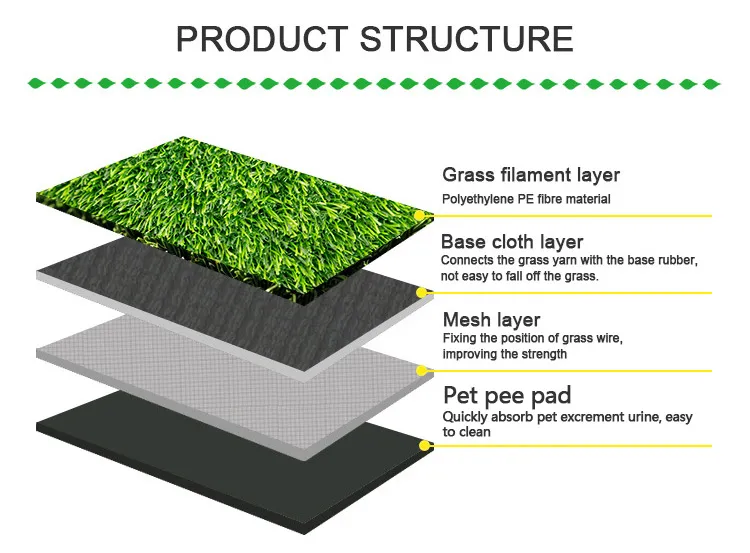
- Afrikaans
- Arabic
- Belarusian
- Bengali
- Czech
- Danish
- Dutch
- English
- Esperanto
- Estonian
- Finnish
- French
- German
- Greek
- Hindi
- Hungarian
- Icelandic
- Indonesian
- irish
- Italian
- Japanese
- kazakh
- Rwandese
- Korean
- Kyrgyz
- Lao
- Latin
- Latvian
- Malay
- Mongolian
- Myanmar
- Norwegian
- Persian
- Polish
- Portuguese
- Romanian
- Russian
- Serbian
- Spanish
- Swedish
- Tagalog
- Tajik
- Thai
- Turkish
- Turkmen
- Ukrainian
- Urdu
- Uighur
- Uzbek
- Vietnamese
synthetic turf football field
Nov . 17, 2024 01:34 Back to list
The Rise of Synthetic Turf Football Fields
In recent years, synthetic turf football fields have gained popularity across the globe, revolutionizing the way the game is played, practiced, and enjoyed. The development of synthetic turf has been a game-changer for various sports, particularly football, where the quality of the playing surface can significantly impact performance and safety. This article explores the benefits, challenges, and future prospects of synthetic turf football fields.
Benefits of Synthetic Turf
One of the primary advantages of synthetic turf is its durability. Unlike natural grass, which can suffer from wear and tear due to extensive use, synthetic surfaces can withstand heavy foot traffic all year round. This resilience means that teams can train and play without fear of damaging the field, which is particularly important in regions that experience inclement weather or have limited sunlight.
Moreover, synthetic turf provides a uniform playing surface. The consistency in the texture and height of the grass blades minimizes the risk of uneven playing conditions, which can lead to injuries. Athletes can confidently anticipate the ball's bounce and movement, enhancing their performance. This predictability allows for better training and gameplay strategies, as players can focus on skill development rather than adapting to the whims of weather and field conditions.
Another significant benefit is the reduced maintenance costs associated with synthetic turf. Natural grass requires regular mowing, watering, fertilization, and pest control, which can be both time-consuming and expensive. In contrast, synthetic turf requires minimal ongoing maintenance, primarily involving periodic cleaning and infill replenishment. For schools and recreational facilities, this translates into significant savings in both labor and resources.
Safety Considerations
While synthetic turf offers many benefits, safety concerns have emerged as a topic of discussion. Health risks associated with the materials used in synthetic turf, especially crumb rubber infill, have raised questions among athletes, parents, and regulatory bodies. Studies have investigated potential links between certain synthetic materials and health issues, leading to calls for further research and the exploration of alternative infill materials.
synthetic turf football field

Additionally, playing on synthetic surfaces can lead to increased heat retention. Unlike natural grass, synthetic turf absorbs heat from the sun, which can lead to dangerously high surface temperatures during the summer months. As a result, it is crucial for teams and facilities to implement heat management strategies to ensure player safety.
Environmental Impact
The environmental impact of synthetic turf is another important consideration. While these fields may reduce the need for water and pesticides compared to natural grass, the disposal of old turf raises concerns regarding sustainability. Synthetic turf has a lifespan of about 8-15 years, after which it must be replaced. If not disposed of properly, these materials can contribute to landfill waste. The industry has begun exploring options for recycling and repurposing old turf, which could mitigate this issue. However, widespread adoption of these practices is still in its early stages.
The Future of Synthetic Turf Football Fields
As technology continues to advance, the future of synthetic turf looks promising. Innovations in materials and infill options could lead to safer, more environmentally friendly surfaces that replicate the feel of natural grass. Moreover, with the growing recognition of the importance of player safety, regulatory bodies are likely to implement stricter guidelines to ensure that synthetic turf fields meet health and safety standards.
In the coming years, we can expect to see an increase in the installation of synthetic fields across various levels of play, from local youth leagues to professional arenas. As communities invest in sports infrastructure, synthetic turf provides a practical and efficient solution for creating high-quality playing surfaces that can cater to the needs of athletes and sports programs alike.
Conclusion
Synthetic turf football fields are reshaping the landscape of sports due to their durability, uniformity, and low maintenance needs. While challenges related to safety, health, and environmental impact remain, ongoing research and innovation promise to address these issues. As the demand for quality playing surfaces continues to grow, synthetic turf is likely to play an increasingly important role in the future of football and other sports. With careful consideration from teams, facilities, and regulatory bodies, synthetic turf can continue to provide a safe, reliable, and enjoyable environment for athletes of all levels.
-
The Benefits of Artificial Turf for Indoors
NewsJul.15,2025
-
How Artificial Grass Suppliers Ensure Quality Products
NewsJul.15,2025
-
Artificial Grass and Pets: A Space for Relaxation
NewsJul.08,2025
-
Balcony & Outdoor Decoration with Artificial Grass
NewsJul.08,2025
-
Best Indoor Artificial Grass for Home
NewsJul.07,2025
-
Best Pet Turf for Dogs: Safe & Durable Artificial Grass Options
NewsJul.07,2025
Products categories









